By
Larry Pearce
with assistance by
Gary Pearce, woolen mill descendant
4/29/01
(Click on images to enlarge/Hit back arrow to return)
(Note: We’re sorry to say that the Woolrich mill in Clinton County, that purchased the Pearce Blanket operation in 1928, has closed as of January 1, 2019. For details, click on the article, “Woolrich Closes its Clinton County Mill” and check back there for more details.)
Part I: The first 100 years – Harmony & Greenville
The Woolrich name is probably as well known in western industrialized countries as any manufacturing company. For almost 40 years the tradename “Pearce Blanket” was billed as “a division of Woolrich, Inc.” While the original Pearce black and gold label indicated that the blanket line was established in 1805, the explanation on the inside of the front cover of a 1990’s Woolrich catalogue boasted:
For over 180 years, the rich warming qualities of wool blankets from Pearce have provided protection from the cold, both in the home and outdoors. Originally founded in 1805, Pearce Blankets now represent Woolrich’s Blanket Division. Over the years, Pearce Blankets have become the benchmark for quality when choosing a blanket.
Another piece of literature boasted that Woolrich’s association with Pearce made it “America’s Oldest Blanket Mill.” At least one of the products in the catalogue, the Hudson’s Bay Point Blanket, goes back even further, however, to 1779. While it’s not known if Pearces ever officially acquired the rights to manufacture these “true classics,” the book reminds us that they were “originally traded for beaver pelts during the expansion of the Canadian Northwest” (2). Other ones, the Greenlander and the Queensland Merino, are “loomed in England” (5). Still others, the Medicine Bow and American Heritage,” are inspired by Native American artisans through an “exclusive” Pearce six-color design (9). More recent labels have the Pearce and Woolrich names side by side. Unfortunately, sometime during the year 2000, Woolrich was supposed to have dropped the name “Pearce” from its blanket line as part of an understanding they had with the Pearce family of Latrobe, Pennsylvania, when the Pearce Woolen Mill was purchased in the 1960s and its assets moved to the Woolrich headquarters in the town of the same name in Clinton County, Pa.
When I visited the Woolrich plant in 1999, just off the west branch of the Susquehanna River near Lock Haven [famous for it’s Piper Cub aircraft factory] in the center part of the state, there was a generous display of Pearce Blankets and historical artifacts in the cafeteria adjoining the factory outlet store. Included was one of the thousands of blankets made for soldiers fighting in the Korean War. Less evident was the carpeting and lap robes made for Peirce-Arrow and Ford Motor Companies during the Model “T” years before the Woolrich takeover and the advent of car heaters.
Blankets bearing the Pearce label are still available today. [Try AMAZON.COM.] But who were the Pearces associated with this famous blanket and how did they get involved in this manufacturing and marketing business? We’re claiming that they were descendants of the “Bourne” Pearces, Richard and Susan, who emigrated to American in the early 1820s. [See “Original Family Narrative.”] So, why does the label say that the business started in1805? Present research leaves a few holes in the Pearce Blanket story, but we do know from the Original Family Narrative that Richard Pearce (1786-1861) “was a miller by trade.” We assume that he dealt in grinding grain from his operation at Pine Creek near Pittsburgh. His wife, Susan Austen Pearce (1794-1865), had a brother Charles who owned “thousands” of sheep at Castle Gate Manor [now we believe that to be Cattlegate Farm in Kent] before selling out and moving north to St. Albans. Later, upon coming to America, Charles Austen and his wife, Sarah Pearce Austen, had land on the [west] bank of the Pine Creek that was “fine pasture land for cattle and sheep.” Anyone associated with sheep, and I raised them for 25 years, knows a little bit about the two main by-products of sheep: wool and meat. One booklet, “The Austens of Shalford,” says:
Wool, throughout the Middle Ages, was the principal source of England’s wealth. It was long her principal export, and later, when Flemish weavers taught the English how to make cloth and dye it, the finished material took the place of raw wool and English broadcloths and friezes [a type of canvas] were sold all over Europe. The customs revenue was derived chiefly from the export tax on wool, and to this day, the LordChancellor, as the King’s representative, takes his seat in the House of Lords on what is still called by courtesy “the Woolsack.” (2)
So, while we don’t believe that either the Austens or Pearces ever became involved in the wool milling business while living at Pine Creek, we think that Alfred Pearce (1816-1895), born in England, the second son of Richard and Susan, may have become directly or indirectly the patriarch of the Pearce Blanket empire after he left home and invested in existing milling businesses, known as The Harmonie Woolen Mills” in nearby Harmonie [now spelled Harmony], originally operated by a German sect known as the Harmonites as early as 1804 [see WWW.HARMONYMUSEUM.ORG]. In 1814 they had sold their entire enterprise, which consisted of 5,000 acres and much industry, and moved to New Harmony, Indiana. The new owner, Abraham Ziegler, was a Mennonite, and Harmony then became closely associated with that religious movement (Incidentally, the Harmonites later moved back to Pennsylvania and a settlement northwest of Pittsburgh called Old Economy, now preserved by the Pennsylvania Historical Commission). Harmony, just 25 miles north of Pittsburgh on the main route to the lake port of Erie, was thriving by the mid 1800s. Among the successful merchants was Samuel Covert, who manufactured salt by evaporating brine from a well using coal from a nearby mine. George Beam and John Enslen operated a pottery furnace. Andrew Wilson (father of the judge and writer John Wilson) and Detmar Boggs were wagon makers. Charles Flowers was a noted gunsmith. George Kline had a large cooper shop where he made kegs and tubs for surrounding farms and barrels for the Jacob Wise Distillery, makers of the “celebrated” Harmony Whiskey. David Zeigler, grandson of Harmony’s grand Mennonite, operated a large steam flour mill next to what would become known as the Pearce Woolen Mill. An early advertisement called it the “Connoquenessing Valley Mill, dealer in wheat, rye, corn, barley and buckwheat.” It was named for the river that supplied water for the town and all her industry. We wonder if this grist mill, just 15 miles north of the old Pearce Mill on Pine Creek, was part of the attraction to Harmony for the second generation of Pearces in America.
We know that Alfred Pearce, although not a Mennonite, bought into Abraham Ziegler’s town. According to The Historic Town of Harmony, PA, by Hon. John Wilson, “The Harmony Savings Bank was organized at an early date and a bank building erected on Mercer Street opposite the Hotel Zeigler. Alfred Pearce was President” (32).
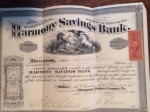
$500 Stock certificate for Harmony Savings Bank, owned & signed by President Alfred Pearce, held by brother John’s wife, Amelia
Alfred’s marriage to Sarah Latchan produced two children, famous in their own right: Isaac (1840-1912), who was appointed chaplain in the Grand Army of the Republic during the Civil War, and Austin (b. 1842, spelling of family name changed before the American Civil War, probably over confusion with famous author Jane Austin), for whom the Austen Pearce House in Harmony is named and which has been part of a National Historic District since 1974.
Austin is identified as “a prominent banker, mill operator, and railroad executive” (“About Harmonie”). Wilson says that he began as a cashier for his father, but we can’t explain the reference to Austen as “mill operator.” The Austen Pearce House featured black walnut and chestnut woodwork and, supposedly, the first indoor plumbing in the area. Alfred kept a pair of spotted Arabian horses and a private coachman for show. According to an advertisement for the property, which later was converted to a fancy hotel, “This house is centrally located and is conducted in first-class style. In connection with this house will be found the best stable in town. Also, large scales suitable for weighing livestock, horses, sheep, etc.” The Guidebook to Historic Western Pennsylvania says that Alfred expected Harmony to become the northern terminal for the narrow gage Pittsburgh-New Cumberland and Lake Erie Railroad (77). The Wilson book calls it the Pittsburgh, New Castle and Lake Erie Railroad that was to run only from Etna, on the Allegheny River above Pittsburgh, to Zelienople, the closest town to Harmony. Incidentally, a straight line from those two points, 20 miles apart, runs right through the Pearce property on Pine Creek, but we know of no railroad lines running that close to the original homestead. Several lines did haul local coal to the river barges and pick up passengers bound for Pittsburgh. Apparently the narrow gauge plan failed and the Pearces were forced to sell the massive house in 1879. Wilson says, “The bank got into deep water by bad investments, and the Pearces were let out” (32). The bank was reorganized under another name. A descendant of Abraham Ziegler bought the house and converted it into the Harmony Inn, a hotel and saloon, which was affectionately known as the “Harmony Hilton.”
After a series of owners, the property fell into disrepair. In 1985, Carl Beers and Gary and Betsy Barnes bought the inn and are in the process of restoring it. Tradition says that the house is haunted. The owners have documented five points:
1. Psychic entities, all friendly, have been recorded at the inn,
2. There are unexplained air movements and electrical impulses,
3. At certain times, images appear,
4. Customers occasionally sense a warm presence, and
5. Furniture and other inanimate objects have been transposed with human intervention.
They leave the matter up to an individual’s beliefs saying simply, “This pre-Civil War inn has been such a big part of so many peoples’ lives (home, hotel, meeting house, livery stable, boarding house, watering hole and restaurant), that the spirit is a sort of guardian of a big block of time, and its primary goal is to link the past, present, and future” (“About Harmonie”).
But, let’s go back to the origins of the Pearce Blanket. The Book of Latrobe Classes: 1925-26, which we will cover in more detail in Part II, states that the Harmony Woolen Mill was acquired in 1864 as a partnership by John Pearce (1831-1893), a resident of Wexford [not far from Pine Creek] who was Alfred’s younger and my Great-grandfather Charles’ (1834-1914) older brother. No doubt, at the height of the Civil War, demand for materials for uniforms and blankets was quite high. But was there already the basis for the wool milling business in Harmony under either the Harmonites or Mennonites? According to Wilson, “John Pearce owned a three story brick building on North Wood Street, just north of where the Semple brick house still stands, where he operated a woolen mill on a large scale, making yarns, blankets, flannels, cloth, etc. His Harmony Blankets enjoyed a wide reputation” (27). Apparently John Pearce was ‘successor to Pearce and Semple, manufacturers of flannels, blankets, and yarns,’ according to an early town directory. Indeed, by 1875 John became sole proprietor. From 1885 to 1903 the operation was registered as Pearce Woolen Company, Ltd., and eventually John Pearce & Son, after William became involved.
Research is ongoing but Kathy Luek, Administrator of Historic Harmony, Inc., found an advertisement that she believes is from the 1930s written by J.M. Schaeffer, proprietor of the Sandy Lake Woolen Mills. It says in part:
Dear Friend:
I was born in Harmony, Butler County, Pa, the 18th of April, 1857. In 1869 I started to work in the Harmony Woolen mill of which John Pearce was the proprietor; and at this time they were all small mills. Most every community had one carding mill and strictly the best of wool was used. Three years later, three of my brothers, Anthony, Frederick, and Lewis, were working with me in the Harmony Woolen Mills. In 1880 I worked one year in the Buhel Mfg. Co. in St. Louis, Mo. At this time woolen mills were larger, and most of them were using shoddy and reworked wool. In 1881 I came back to the Harmony Woolen Mills, and in 1885 John Pearce got up a Stock Company at Greenville, Pa. I helped set up the machinery at Greenville, and in 1886 I bought the Sandy Lake Woolen Mills and started for myself. . .
Schaeffer goes on to boast about the quality of his products, the great help his brother and sons had been to him, and how “it took 50 years to build a good reputation so that it will be easy for my sons to carry on where I leave off.” Businesses were often family affairs back then. No doubt John, being 15 years younger than Alfred, had some reliance on his older brother. What was the working relationship between brothers Alfred and John? We’ve lost track of both Alfred and Austin, but John is, today, the one most closely associated with the early success of the Pearce Blanket.
The business moved 40 miles north to Greenville, PA in 1885, the home of the Lutheran institution, Thiel College. The three story brick structure had a basement and was located on the north side of Main Street, just west of Water Street. Ironically, the source of water for the new mill was the Shenango River, the same as J. M. Schaeffer’s Sandy Lake Woolen Mills, although the motive power was supplied by an 80 horsepower boiler and a 50 horsepower engine. The ownership in Greenville is listed as John Pearce & Son, Proprietors, and they did business as Pearce Woolen Mill Company, Limited. About 25 men were employed. Their products were flannels, yarns, and blankets of all grades. The reason for the move, according to Doug Cerroni of Thiel and the Greenville Historical Society, was “the superior advantages offered by Greenville.” The Society still has a Pearce woolen blanket from 1885, “woven by the famous Pearce Woolen Mills in Greenville.” The Record Argus: Centennial Edition (1958) says, “Blankets were woven for the Joseph Horne Company and famous New York hotels. Wool was purchased with the fleece still on the hide and arrived packed in salt to be removed, carded, spun and blankets woven.” The specific brand names included the following blankets and flannels: “Centennial Golden Fleece,” “Rose of Sharon,” “Polar,” “Harmony,” and “Alaska.” A major client was the US Government, especially during the Spanish-American War.
John’s marriage to Amelia Douglas Pearce [probably of Greenville, which may have been the main reason for moving the operation there] in 1858 produced Walter, Annie, and William [Amelia’s grandparents died on their voyage from Scotland to America. Her father Michael and his brother, then orphans, were each adopted separately by an English and a German family. They did not meet again until they were adults, when, as the story goes, they could not talk to each other because of speaking different languages].
William, born in Harmony, started as a bookkeeper with the mill and became the owner and general manager after the mill moved to Latrobe in 1904. In 1886, William married Jessie Ash [Her grandfather was known as the first pony express rider west of the Allegheny Mountains. He was captured by the Indians and tortured]. Their marriage produced five children. The oldest, Harry, was a civil engineer on the Panama Canal project, and the youngest, Joseph, became the superintendent at the Latrobe operation.
In 1904, the Greenville mill burned to the ground, and the operation moved to Latrobe, PA, a distance of 80 miles from Greenville. Latrobe is southeast of Pittsburgh along the Lincoln Highway, Rt. 30, and the Loyalhanna River.
This is the end of Part I, the first 100 years of the Pearce Blanket, from Harmony to Greenville. We’re left with several unanswered questions, including why the Pearce Blanket label lists its origin as 1805. Are the Pearces claiming an early wool milling operation by the Harmonites, or was there some connection to a Pearce family wool milling business back in England? When did Alfred arrive in Harmony, and what was his role in the John Pearce business? What happened to Alfred and son Austen? Do you know of any of the ancestors of Alfred, John, or Austen? If you can help answer any of these questions, please write to me at LRYPEARCE@GMAIL.COM .
One is often pleasantly surprised to find a handsomely woven old blanket, and upon closer inspection, see a black and gold label containing the name Pearce. With beginnings in 1805, and now “a registered trademark of Woolrich, Inc., Pearce Blankets have become the benchmark for quality when choosing a blanket,” says the Woolrich catalogue. While the website [WWW.WOOLRICH.COM] prominently lists a blanket called the “Pine Creek,” a reference to the original Pearce homestead in northern Allegheny County, Pennsylvania, most of the other Pearce collection is missing. However, just yesterday, Pam Pletcher, a Woolrich customer service agent, told me that they are keeping two favorites: The Pearce Berber Throw and the Pearce Pinnacle Stadium Blanket. That is good news for those of us who want to see the family name preserved. The Woolrich Company bought the Pearce Woolen Mills and famous blanket label in 1928, much earlier than originally believed when Part I in our series was written. Woolrich decided to keep both the operation in Latrobe and the Pearce company name and trademark, because of their reputation. So, what follows is the story of the Pearce Blanket in the 20th and 21st centuries.
Part II: The second century – Latrobe to Woolrich
The Pearce Woolen Mills began with John Pearce (1831 -1893), the ninth issue of Richard and Susan Austen Pearce, who emigrated to America in 1821 and settled in what is now North Park, near Pittsburgh, to operate a grist mill. John was my great uncle, a few years older than my Great-Grandfather Charles (1834-1914), who stayed on the homestead to run the mill. John and his older brother Alfred (1816–1895) bought deeply into the nearby Butler County town of Harmony. Sometime after the German religious sect, the Harmonites, sold out to a community of Mennonites, Alfred started a bank, built a big house, and waited for the railroad to come by and make everyone rich. The railroad never brought the return that Alfred had promised his investors, and he and his son Austen were asked to leave the bank. They sold the big house, and we’re not sure where they went, except that the Austen Pearce house still stands and is supposedly haunted. Could it be that one or both of them are refusing to leave?
Alfred’s younger brother John became the sole proprietor of the Harmony Woolen Mills at the height of the Civil War, 1864. According to the 1906 edition of The History of Westmoreland County, “The Harmony Woolen Mills were founded in 1804 by the Harmonite Society. One of the oldest in Pennsylvania, it set the standard for blankets, auto and steamer rugs, and dress goods.” That seems to confirm our theory from Part I that the Pearces and Woolrich kept that early date for marketing purposes as “the oldest blanket mill in America.” At any rate, John, and later his son William (b. 1865), and ultimately his grandson Joseph [listed in the 1911 family genealogy as James] became famous for their fine woolen products. After two decades in Harmony the family moved the operation 40 miles north to Greenville, PA, “because of the superior advantages there.” There was a fire at the Harmony mill, but the reason for the move north may have been as simple as the fact that John’s wife was from Greenville. From 1885 until the Greenville mill burned out in 1904, John Pearce and son William did business as the Pearce Woolen Mill Company, Limited. Their reputation grew around the world with clients in Detroit, Pittsburgh, New York, and Washington, D. C.
With the death of John, only 62, William took the responsibility of owner and general manager of the plant and made the decision to move to Latrobe after the Greenville fire, about 80 miles southeast of Greenville and 30 miles east of Pittsburgh along US Rt. 30 and the Loyalhanna River [Old & New Westmoreland County (1918)]. Latrobe sits at the mouth of the scenic three-mile Loyalhanna River Gorge, now owned by the Western Pennsylvania Conservancy. This town lies at the base of the Chestnut Ridge and was named for the British-born architect and friend of Thomas Jefferson who designed the capitol building complex in Washington D.C. While the town is known as the site of the first professional football game in 1897 and for her famous sons, Arnold Palmer and Fred “Mister” Rogers, she is perhaps best remembered as the home of Rolling Rock Beer, “brewed with mountain spring water,” long before Coors ever came east, and placed in the green pony bottles with the number “33” on the label. Have you ever wondered what that number stands for? I know, but that’s not part of our subject today [write to me and I’ll tell you].
But, speaking of Mister Rogers, did you know that many of the characters on Mister Rogers’ Neighborhood, like the McFeeleys, were based on real people with whom our Pearce family associated with as prominent citizens of Latrobe? The McFeeleys owned the brick works that probably furnished the materials for the newer sections of the Pearce Woolen Mill. Both the old Palmer family [there’s a nearby fort named for them] and Rogers family were, and still are, active Presbyterians [Mrs. Palmer was on First Presbyterian’s worship committee until her death several years ago and the late Fred Rogers, who passed in 2003, was an ordained minister]. If the Pearces were Methodists when they arrived in America [more coming in a future article about a possible Pearce connection to John Wesley], then we believe John Pearce converted to Lutheranism when he married Amelia Douglas of Greenville, the home of the Lutheran Thiel College. Church sources say that the Pearces were active in the Latrobe Lutheran parish [WWW.TRINITYLATROBE.COM]. John was a Republican and Free Mason. Son William was “without a doubt, one of the most prominent figures in the business world of Latrobe and Westmoreland County generally” (Old & New Westmoreland 310). William’s daughter, Blanche, was baptized as an adult in 1912 in the Lutheran church. Joseph and his wife, Florence Lynch Pearce, had all their children baptized in Latrobe: Joseph John, Jr.(b. 1919), Mary(b. 1922), and Florence (b. 1925). But, searches of both the major cemeteries there failed to find a single Pearce. One source said that Amelia, John’s wife, lived into her 80s and moved back to Greenville. We believe that they are both buried there. Meanwhile, William retired in 1918 and moved to a farm in Milford, Delaware. We believe that Joseph also moved east after the mill was sold to Woolrich in 1928. His grandson, Garrett, is now located in Chester, New Jersey, and provided the present owner of the Pearce building in Latrobe with a wealth of information. [We hope to feature an interview with him and another descendant Gary at a later time.]
The old Pearce Woolen Mill building is still standing just off Ligonier Street at the northwest corner of South Harrison and Watkins Avenues, right along the river [turn south at the Beacon Auto Store]. It’s easy to see that the enormous amounts of water necessary for washing and rinsing the wool could easily be brought in and released through the large ports. We learned that the Pearces moved to Latrobe at the urging of one of John and William’s Greenville partners, The Pittsburgh Dry Goods Company. The operatioin’s name was officially again changed: The Pearce Manufacturing Company. What was once a single building with several smaller out buildings is now a “U” shaped complex housing The Latrobe Health and Fitness Center and OPCO, a designer and manufacturer of foam packaging materials. [Ironically, the wife of the owner of the Pearce building, Mike Payne, was our neighbor when we lived just up over the hill in the little coal mining town of Jerome. Small world, isn’t it? In fact, I thought of calling this article “Return to Forbes Road,” because the Pearces relocated near thoroughfare that first brought their ancestors to Western Pennsylvania in 1820. More irony.] On one side of the Pearce building is a beautiful park and river trail, and on the other is the site of the railroad wheel foundry for Standard Steel. It has been recently razed. Incidentally, this building originally housed the American Locomotive Company, and was called the largest building under one roof in the world. It is massive. Across Ligonier Street is the new Latrobe Public School, almost complete. Just down the street is Latrobe Steel, now a subsidiary of Timken, a world leader in bearings and specialty steel. Further away is Kennametal. They make those automobile tire studs that keep you from sliding in winter weather.
The Pearce building in Latrobe was “available for immediate operation” after the Greenville fire of 1904 (100 Years of Latrobe, PA). It was originally constructed and used as a mower and reaper works until 1891. The Strike-a-Light Match Company then moved in for several years. The biggest improvement to the physical plant came during World War II when the Pearce Woolen Mills obtained an enormous government contract for blankets and uniform materials. The entire brick complex was reinforced with steel girders. All of the original 12-inch wooden joists on 12-inch centers, and hardwood flooring, on the second level were maintained and are still there today. Owner Mike Payne boasts that he can drive a heavy forklift across it and never feel the building vibrate. He recently spent a quarter-million dollars to replace the roof. Such good stewardship over more than a century assures us that the structure will be useful for years to come. It’s interesting that in the 1970s, the Pearce building was the home of the Westmoreland County Vocational-Technical School and afterwards served as incubator for a number of thriving companies.
I’m reminded of my first visit to the Latrobe Public Library. I had found a tip in Pittsburgh’s Carnegie Library that Latrobe was once home to a Pearce Woolen Mill. Living just 25 miles from Latrobe for 25 years, and passing the site at least once a month on the way to visit my parents in Pittsburgh, I couldn’t believe that I had missed it. When I asked the librarian if she had ever heard of a Pearce Woolen Mill, she exclaimed, “My yes. When I was a little girl, my mother would take me down to the mill with her to buy fabric . . . .” She then gave me directions and insisted that I read a local publication in the reserve section, The Book of Latrobe Classes: 1925-26. In this treasure is a chapter by a high school Problems of Democracy student, Kenneth Harvey, entitled, “The Manufacture of a Wool Blanket,” and it contains the following historical trivia:
• The Pearces were the only company in town to employ “girls,” about 100 of the total 175 persons who worked at the mill [later the company employed as many as 200 people].
• They made blankets and cloth for many large department stores around the country.
• Their most famous client was Ford Motor Company, for whom they made blankets [before car heaters were invented] and fabric for rugs and uphostery.
• Originally, Pearces used a mixture of wools. One was considered to be “B-super class” and the other “Noils,” shorter fibers that were clipped from sheep after the long ones were taken. Today one might call this a “second cutting,” which is softer and cleaner but contains more lanolin because it’s closer to the animal.
Harvey gives us a very simple tour of the process used at the Pearce Woolen Mill in Latrobe, which we believe remained unchanged through the Great Depression and WW II. No doubt much of the same process is used today at the Clinton County Woolrich plant, only with fewer workers and more automation:
1. Wool was brought into the mill in burlap sacks, scoured and cleaned, with the waste water dumped back into the Loyalhanna. One source said, “This location was ideal because of the ease in getting rid of waste material, of which they had a large amount.” What would the EPA say about that today? [One of Mr. Payne’s older employees remembers swimming in the river as a young boy when the dye residue was released. He’d go home exclaiming, “Look, I’m green.” Fortunately, with a little soap and hot water, the lad was as good as new.]
2. That wool which was not to be used immediately was “carbonized, neutralized, and dusted” [probably with a type of filtered charcoal], marked by lots and put into 100 pound backs for storage at 32 – 60 degrees and 60 percent humidity to avoid drying out or taking on too much moisture.
3. At the “Picker House” wool was “blended” and mixed with an emulsion of wool oil (7 ½ gallons per 600 pounds. This would hold the fibers together for manufacturing because the machining process tended to separate them.
4. Onto the “Card Room” where the wool sat in large bins on rollers. Here the fibers were separated by a machine called a “breaker” and put into thread-like form known as “roving,” with 5 pounds of fiber being placed on small spools. Other fibers from the breaker roll onto larger spools holding 7 pounds of fiber. This would come from the other direction and was called “slubbing.” [This must be similar to the way a spinning wheel twists fibers to join them together for later weaving or knitting]. In the spinning room bobbins of thread were wound containing 400 yards [the length of 4 football fields] and weighing 27 pounds. The spinning machines were called “mules,” and 320 bobbins were filled at one time.
5. Now, into the “Warp Room” where very large “spoolers” were filled with 108,000 yards each [That’s the length of over 1,000 football fields] and placed on a “beamer” [NOT an expensive car, I presume].
6. In the “Weaving Room” the beamers, containing bobbins and spoolers, “picks the stitch” by going through a “shed” with a “shuttle,” the raising and lowering of threads. By changing the “harness” and “cams” the “weave” and “twill” was formed. They made up the unique design of each fabric.
7. The fabrics, in this case blankets, were inspected, washed, and “extracted,” or spun dry. At one time their capacity to wash was 32 pairs at one time.
8. Dyed blankets were soaked in hot sulfuric acid. Some were simply bleached.
9. A process called “napping” used small wire-like needles to rub the blankets “soft and fuzzy” [For many years Pearce used a “Teazel Bur Napper” on their best blankets, and was the only mill in the country using this technology].
10. The blankets were finished with edges, i.e. bound with ribbons.
11. As the process neared completion, the blankets were checked for required weight, which was greatly influenced by temperature and humidity.
12. Finally, information tickets were attached according to jobbers and wholesalers. The blankets were placed in individual bags, and 25 – 50 blanket bags were placed in shipping boxes.
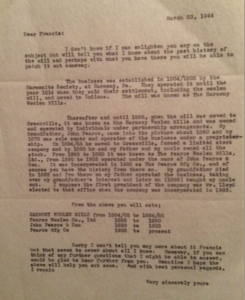
Letter from retired woolen mill owner
Joseph Pearce to Francis Harvey, CFO
(1944 from grandson Gary Pearce)
In 1928, part-owner of the Pearce Woolen Mill, the Pittsburgh Dry Goods Company, experienced several hardships, including a disastrous fire in one of its buildings. The time seemed right for the Pearce family to sell their interests also. The Woolrich Company became the new owner, and M.B. Rich, one of the famous [Wool] Rich brothers supervised operations for a year. Then, James Carson assumed the presidency until his death in 1957. The new officers in 1929 were Ray Senior, General Manager, and Francis Harvey [probably the father of the Kenneth Harvey cited above], sales and office manager. In a 1976 statement to The Latrobe Bulletin, Woolrich quotes the older Harvey and Reuben Harkness, mill superintendant. [We only include that which goes beyond the younger Harvey’s story pertaining to earlier Pearce family operations prior to 1928.]:
Pearce purchased wool on a scoured basis from wool dealers in Philadelphia and Boston. Much of it came from the finest wool-producing sheep, the Merino [The Harmonists had introduced this breed to America in the early 1800s]. After taking the wool from the warehouse, the next operations were blending, carding, spinning, weaving, dry cleaning, and finishing. After the carding process, the blended wool strands were placed in a parallel form called a “sliver.” The sliver was wound onto spools, according to weight, later to be transformed into yarn. Spinning the wool into yarn required great skill. As the sliver came from the delivery rolls, it was hooked through a “traveller,” a spinning machine that spun about 6000 RPM, to draw it out and make it into yarn. The next process was to get the yarn into fabric structure by weaving. The strands were crossed and recrossed on the loom many times under the watchful eyes of a weaver who saw to it that all parts of the machine were operating perfectly. Rigid inspection throughout the weaving process assured a faultless quality of material, which was the hallmark of Pearce all-wool blankets and fabrics. After careful inspections to remove imperfections, the cloth was passed continuously through a dry cleaning machine to remove any oil or dirt left in the fabric. [Then] in the finishing operation, the cloth was placed in machines called “fulling mills.” In this process the fabric is shrunk 10 to 30 percent. This gave it a closer, firmer texture. Napping and other operations that followed produced a soft, fuzzy surface on the blankets that helped it to retain heat. Other natural finished fabrics were cheviot, tweed, and Shetlands. In the final stage of finishing, blankets were cut to size and a wide binding added. Harkness added some interesting sidelights: “Believe it or not, the best woolen blanket we made during the early years was not for the bed, but for the horse.” The Pearce company had a beautiful team of black horses that pulled double-decked wagon loads of blankets to the freight yard. Warm woolen blankets were worn by Strickler’s team of large dappled greys hauling sand from Paddy’s Hole in Loyalhanna Creek, by the Brewery’s team pulling loads of beer kegs, and by Paxton’s livery stable horses.
Other larger contracts included the major steamship lines sailing between New York and Europe. Blankets were a must for passengers who wished to sit on the deck. The William Penn Hotel in Pittsburgh bought 500 blankets with their name and seal woven into the fabric. On other looms, 1000 white blankets with blue stripped borders were made for the hotel. Similar blankets were made for the venerable St. Vincent College. Pearce manufacturing officials were quick to brag that of the over one million Army blankets and thousands of Navy and Marine blankets shipped, not one order was ever rejected by government inspectors. Even more significant were the letters from servicemen overseas who recognized the black and gold Pearce label and thanked them for the quality in this “little piece of home.”
The Latrobe mill had a factory outlet store for the public just as the Woolrich mill in Woolrich, Pa. and other manufacturers have today. Plant tours were offered, and thousands of people visited each year to see how Pearce Blankets and fabrics were made. Many brochures entitled “How Pearce Blankets are Made,” which included the story of wool and how to care for woolen products, were distributed around the world. Of particular interest to contemporary human resource departments is that, when the mill was moved to Woolrich, PA, many Pearce employees had 40 or more years of service:
Louis Schulthies (1907-1957), accountant, Reuben Harkness (1910-1960), weaving room foreman and mill superintendant, LeMont McCracken (1918-1968), washing and dyeing foreman (moved to Woolrich), Benjamin Smith (1904-1943), card room.
Others who served faithfully were W.C. Kuhn, Thomas McGuire, George Stumpf, Harry Spicher, Frank Botts, Walter Hunter, and W.C. Waltzer. Surely, this longevity says something about the Pearces and Richs as employers and the working conditions in Latrobe.
In addition to regular picnics [see photo above], the company sponsored a baseball team that played local colleges, such as St. Vincent, and the Homestead Grays, famous as one of the original Negro National League teams [WWW.CLPGH.ORG]. Pearce teams boasted that they had made the material for their own uniforms.
With the death of Mr. Carson and changing economic conditions, foremost being the improvement in home heating technology [i.e. Who needs a blanket – just turn up the heat!], Woolrich decided to consolidate all woolen mill operations to the Clinton County plant in 1960. But, to the original Pearce line of all-wool blankets, Woolrich had added ladies’ coating and suiting fabrics in the 1930s, tweeds for men’s topcoats and sport coats and fabric for fine dress and sport shirts and children’s wear in the 1950s, and gradually expanded markets in Canada and Central America over 30 years. Latrobe had offered the venue for the manufacturing of fine woolen products under the Pearce label. By the 60s, modern synthetic fabrics were replacing wool and natural fibers. Fortunately, many people today recognize the value in natural blends and are returning to wool and cotton fabrics.
Be on the lookout for those famous Pearce Blankets. Maybe you’d like to order one off the Internet while they’re still available. One alternative to the Woolrich factory is. If you ever plan to visit the Woolrich Mill in Central Pennsylvania, write me at LRYPEARCE@GMAIL.COM and I’ll give you a tour of the Latrobe site while you’re in the area. And, if you have the time, we can have dinner at the Austen Pearce House in Harmony. Maybe Great Uncle Alfred will make an appearance and say “Hello.”
Last revised 9/30/20 with note of Woolrich mill closing from 1/25/19
E-mail address revised 2/12/24


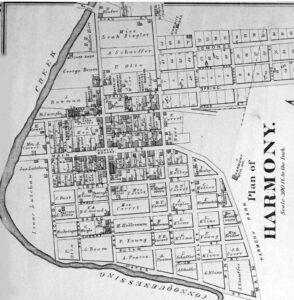
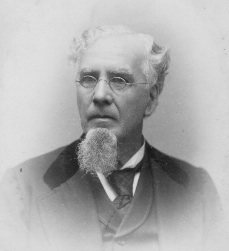

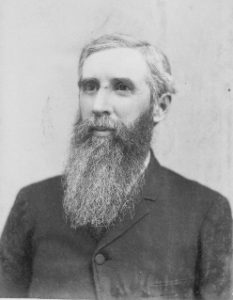
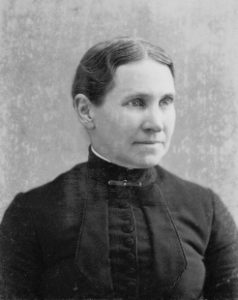
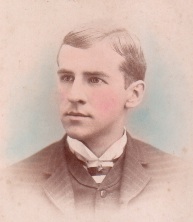
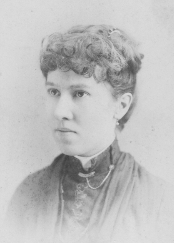
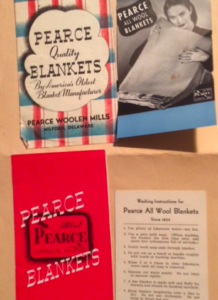
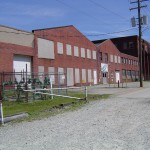
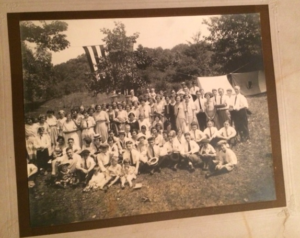
I loved the information. I found a Pearce wool blanket at a local thrift store for $20.95. It is a twin size. I look for wool blankets to keep the heating expense down in winter. I loved learning it’s history.
You have a treasure there, Nicole. Glad you enjoyed the history, which goes back 200+ years. There aren’t too many Pearce blankets still in circulation. Happy you’re going to use it for what it was intended. Stay warm!
Larry
I have in my posession a blanket with a paper Pearce Label on it. I am wondering if you could send more information as to year of maufacture if I send a picture. ( plus where would I send it?) It is pink, 85% wool and 15% nylon, permanently moth proofed, Quality Pearce Alden, and 66×90. There is no cloth label on it.
Also is it replaceable in the same quality. Amazon doesn’t have anything like it.
Thank you. Your article was very interesting!
Hi Linda,
I am not an expert on the Pearce Blanket or the Pearce Woolen Mills, just part of the family, but a quick e-mail to the Woolrich Company in Woolrich, PA, will get you all the answers you need. While they no longer make the Pearce line anymore, they own the franchise and have old blankets on display. Better yet, if you’re in Central Pennsylvania, stop for a tour of the factory.
Interestingly enough, just after I heard from you, I received an inquiry from someone with additional information on the Pearce operation. I looking forward to hearing from him again and will certainly post pertinent additions to my research. Check back on the Pearce “Table of Contents” from time to time.
Thank you so much for your interest.
Larry
Certainly a trip down memory lane for me as my Father Ray Senior worked at Pearce for over 30 years finally being promoted to General Mgr.A very fine company and the purchase by Woolrich added so much to the Pearce heritage.I have many memories of Pearce Woolen Mills all of which are the very best.
Tom, what a thrill to hear from you. Are you still in the Westmoreland County area? Is there any chance of hearing some of your “memories” of the mill, as my research is ongoing? My private address is PEARCE@ATLANTICBB.NET. Thanks so much for sharing. I sent your note to everyone in our family before I posted it to my web page.
Larry
I was thrilled to find your page! This coming Sunday is the Schaeffer family reunion and J. M. Schaeffer, owner of the Sandy Lake Woolen Mill, is one of our relatives. So neat to see the connection here. Thanks for sharing!
Tricia,
Thank YOU for sharing, and now all the other of our readers know about your family reunion! Please give your Schaeffers our best and write back with any new information on the woolen mill industry way back then. Regards,
Larry
I have just purchased a wonderful red and green plaid blanket with a red silk? border. The label reads Pearce Mfg. Co. with 2 numbers,7-14506 and 7-15293. Can you give me an idea of the age. I just love it.
Hi Marilynn,
I’ve been referring everyone with such questions to the Woolrich Company in Woolrich, PA. They purchased the Pearce Blanket works in 1927 and have been very helpful with my research. Thanks for sharing your “find.”
Larry
I just received a Pearce Wool Blanket that was given by my parents (who are now deceased) to my Aunt and Uncle in March of 1946. It was given as a wedding gift and my frugal and eccentric Aunt did not unwrap it. She is now in assisted living and children are going through her house and found this blanket. The blanket is in the original box and it is blue. I do have a question concerning this blanket. The wool that was used could it have been sent to you by my parents to make this blanket as we were sheep growers or do you use your own wool? I am so happy to receive this blanket back and I will treasure it. I hope you can get back to me. Thank you again.
Hi Linda,
Although I am a Pearce related to the Pearce Blanket family, I am essentially an historian and genealogist. My understanding is that the Pearces bought their wool off the market and/or regular suppliers. Where did your parents live? It’s very possible that your wool found its way into the mill at Latrobe if the blanket was manufactured before 1927. Around that time Woolrich purchased the operation and moved it to central PA. May I suggest that you e-mail your question to that company, which ceased using the Pearce label after the turn of the century. Let me know what they say. Thanks again for the question and your interest in my website. Enjoy your blanket!
Larry
I am replacing a binding on the classic black/red wool blanket. Has a number on the tag – 7815. This blanket is owned by a 101-yr old lady in New Orleans. This article has helped a great deal in understanding the history of the Pearce family. Is there anywhere I can go to learn more about THIS blanket number?
Hi Lynda,
Thank you for your interest in my webpage, and especially your kind words about the Pearce Blanket article. You don’t say where you live, but I’m about 3 hours from the Woolrich factory in central PA that bought out my family in 1927. They’re right above State College and were very kind in helping me with my research via a personal visit, e-mail, and the telephone. I think that if you direct your question to Woolrich.com they would be able to help you. Thanks again, and if you don’t mind, drop me a line as to the outcome. Regards,
Larry Pearce
Recently my wife who is an amateur genealogist located my grandfather’s death certificate. I had told her he worked for the Latrobe Woolen Mill but his certificate stated he worked for Pearce Mcg. Co. That led me to Google and happily to your site. I’d like to know when he worked there. I believe they moved to Latrobe from Fayetteville Pa. around the time of WWI. He died in 1944 in Pittsburgh. He probably wood have been about 50 when he arrived in Latrobe. His name was William Emory Biesecker.
I’d appreciate any suggestions for finding out more if possible.
Thanks for the great history lesson.
Don Walker
Pittsburgh
Hi Don. Good to hear from you. We live up in the mountains of Somerset Co., PA, and I can’t believe how many times we drove right past the Pearce Woolen Mills (legally Pearce Mfg Co.) on the way to visit my parents in Moon Twp., never knowing the connection. If your grandfather was 50 when he worked for the company during WWI, he may have been ready to retire when Woolrich took over and moved to Central PA in 1927. If family, the internet, or Ancestry.com can’t give you any more on your grandfather, you might try the Latrobe library the next time you’re out this way. They were tremendously helpful in my research. BTW, our Somerset Library is named after our local Biesecker family. Please let me know if you find anything, and thanks for your kind words.
Larry
Hi Larry,
I believe you and I corresponded a number of years ago. I am one of the grandchildren of Joseph Pearce, William Pearce’s son, My Dad, Joe Pearce, was probably the last of the Pearce’s in the Woolen business. He and his Dad sold the garneting plant in Milford Delaware in about 1960.
Anyway, I would love to try to get together with you at some point and exchange information.
Gary
Hi Gary,
I look forward to chatting with you privately and sharing some of your Pearce Woolen Mill pictures and artifacts on this venue.
Larry
You might be interested to know that ShopGoodwill is selling a Pearce Woollen Mills Striped Hudson Bay Blanket, still in its plastic bag. http://www.shopgoodwill.com/viewItem.asp?itemID=20532410
It’s a bidding process and right now the price is $55. Looks like a popular item!
Susan,
I see these Pearce Blankets pop up various places from time to time. This one found it’s way to Denver. Very interesting. Thanks for sharing!
Larry
Wow! I am sooo happy that I’ve researched the history of the Pearce family and woolens. I was recently gifted a beautiful tin blanket box, complete with an imprint of a flower, and THREE full size, PERFECT condition vintage woolen Pearce blankets!!!! They were being rejected at a local second hand store (as the expense of dry cleaning was not worth the resale to the shopkeeper) and I recognized them as special. The lovely owner gifted me the whole shebang and I am pleased as can by, as I had originally eyed them to be Pendleton before checking the labels. As a girl originally from the east coast, I was thrilled to discover they they were manufactured by Pearce. As a child, I grew up a hand full of miles from Guilford Mill, a grist mill in existence since the 1730’s in Guilford county North Carolina, eating wheat, corn, rye, etc etc still ground by water and stone. As an adult, I was chef/owner of a farm to table restaurant for a few years and ordered my flouer, polenta, rye, cornmeal, and buckwheat from the mill. It is still in existence today, owned by it’s 4th owner ever, I believe.
I value quality, and I feel so lucky to own those Pearce blankets! I’m going to launder them, use them, store them safely in summer, and be thankful that I can enjoy American made quality goods like my beautiful Pearce blankets.
Sincerely,
Kim Zesiger
Hi Kim,
What a wonderful story! Speaking for hundreds of family around the world, I am glad that you’ll be preserving that warmth-giving treasure. I’m so happy that you found our webpage. Kindest regards,
Larry
Very nice work & thanks for sharing the Pearce Mfg Co. history. I just found a kelly green, twin-sized blanket with the Pearce label at a Western PA church yard sale for $3 … :~)
As an aside, I volunteer occasionally at the final home of the Harmony Society, Old Economy Village, in Ambridge, PA, so this was an interesting storyline.
I’m always on the look-out for vintage woolens since I have sheep and also sell our wool & naturally dyed yarns.
Hi Rose Marie,
We have some things in common: 1. I grew up across the Ohio River from Old Economy (Moon Twp.) and have always appreciated its history; 2. I raised sheep for 25 years; and 3. We both know a bargain when we see one. Hold onto that blanket, because it’s rare! Thanks for sharing!
Larry
Hello, I am working on my family history on Ancestry and wanted to find some backround on my grandfather, Louis M. Schultheis. He worked as the accountant for Pearce Mfg in Latrobe for 50 years from 1907-1957. I googled Pearce Mfg and came across your article. Fascinating read. My mother also worked there too.
Thank you.
Hi Sabrina,
Thanks for your interest in the article on our family blanket and the old Pearce Manufacturing, Latrobe, PA. Please let me know if I need to add anything since your family was such a big part of our success. Regards to all,
Larry
Hello,
I am a member of the Latrobe Area Historical Society. We may have so information that you could use. If you are interested, please email us at latrobeareahist@gmail.com
Hi Pam,
I need to get over the mountain from Somerset County and see what you have on the Pearce Woolen Mill and other things. Thanks for your special invitation.
Larry
Hello!
I found an article you wrote on Pearce / Woolrich and I have a wild question for you! This is a shot in the dark, but I have to try! I used to own this blanket, but I lost it during a move years ago. It was my late mother’s and I LOVED that blanket. From what I’ve found it may be a vintage Pearce or Woolrich blanket. Possibly merino wool with silky trim.
I contacted Woolrich and was told it is likely an old Pearce blanket but due to Covid, they don’t currently have any access to their archives. Anything help is sooo appreciated! I want to own this exact blanket again, but I’m struggling to find it. Maybe if I knew what the style name, I would have an easier time.
Do you run into a lot of Pearce blankets where you are? Maybe you could keep an eye out for me. Thank you so much for your time!
Hannah France Mikus
Hi Hannah,
I dig out my article every few years to update it. I don’t keep or keep up with actual Pearce blankets though. We’re about 30 minutes from the old Latrobe factory, which is now a styrofoam company. We ride bikes along the river there. I hope to get back up to Woolrich, which is 2 1/3 hours away when the pandemic is over. With your permission, I’ll post your inquiry below the article on E-gen to see if we can get a response. Please just say, “OK.” Stay well, and stay tuned,
Larry
Hi Larry,
My grandmother worked at Pearce in Latrobe from WW2 until 1958. We have several of the blankets. We got lots of the rejects, but they got used up over the years from use. The ones the family still have were for special occasions or when company came. My brother and I would go into town on our bikes and visit during lunch break, then watch the girls work after lunch. My brother later worked at American Locomotive/Standard Steel, which was next door.
John, Great to hear from you. We live just over the mountain in Somerset County and pass the old plant on our way to Pittsburgh. This week we saw that the giant glass-framed plant next to the old Woolen Mill is gone. Across the street is a new elementary school. Latrobe is “fixing up,” but we won’t let them forget about our family heritage. Hang on to those blankets!
Larry
Enjoyed the read. I have sold military wool blankets for over thirty years in my army navy store. U.S. blankets mainly, but for several years in the late 90’s-early 20’s we could buy wool military blankets from Europe, too. What led me here is a recent discovery of unopened cases of GI OD green wool blankets dated 1970 manufactured by Pearce Woolen Mills, Woolrich PA. I was fortunate to be there and grab a few cases to sell in my store. Incredible to think they’ve been sitting in a warehouse somewhere for 50 years.
Thanks, John. What a story! Where is your store?
Larry
I have an advertising sign for PEARCE WOOLEN MILLS. I am wondering what the sign may be worth. Thanks
The US Air Force Academy issued two Pearce blankets to each cadet. They were a solid color, and each graduating class had its own color, either red, blue, yellow, or grey. I still have mine after 52 years because they are tough as iron.
I don’t know what the school uses now.